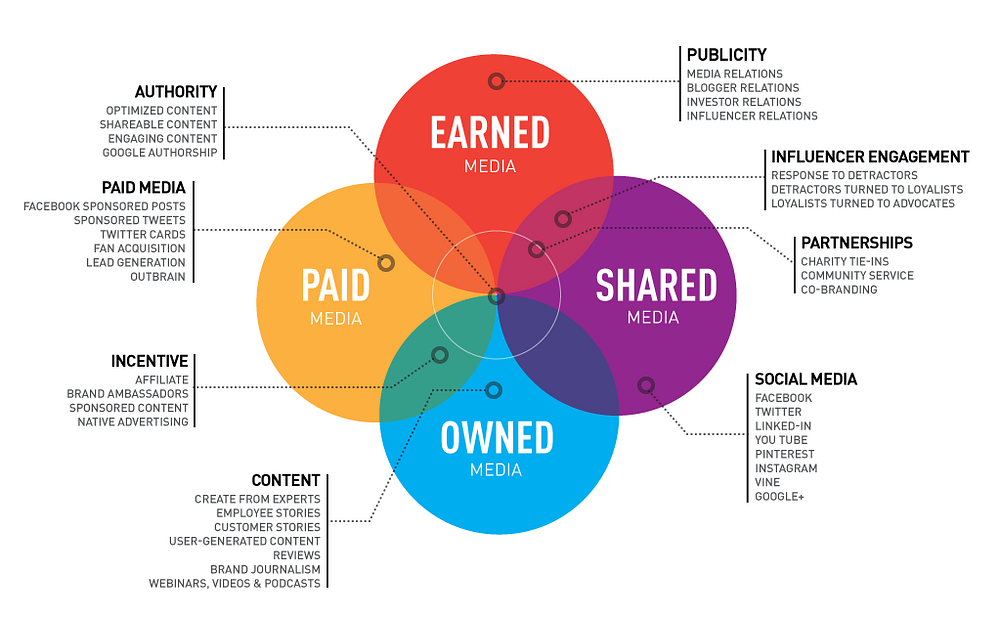
A few years ago I believed developing PR strategies was outside the responsibilities of a marketer, and to a degree it was. But as marketers, we are responsible for promoting and selling products and services to our target audience.
Irrespective of how that is done, whether through content marketing, email marketing or social media, a semblance of trust is required for any business transaction, and nothing achieves that like good PR.
This is why as a growth marketer it’s important to know at the very least, the basics of PR. If you are unsure of the difference between marketing and PR read This Article.
Now that you understand the importance of PR, it’s time to create a simple PR strategy.
There are 8 steps to follow for creating a comprehensive PR strategy, these steps are:
- Review past PR activity
- Create PR goals
- Define your target audience
- Analyze the macro and micro environment affecting your business
- Identify key messages
- Select PR Tools
- Plan PR tactics
- Measure results
1. Review Past PR Activity
Before we create a PR strategy for your business, it’s important that we analyze past PR activities, especially that of the previous year. This analysis should be done both for your business and for your competitors. We can do this by asking the following questions:
- Did you get any media attention? Did it impact your business in any way? Did your competitor?
- Was it a positive or negative coverage?
- What journalist or blogger wrote favorable articles about you? What about your competitor? In what publication or blog?
- What journalist or blogger wrote unfavorable articles about you? And your competitor? In what publication or blog?
- How influential is the journalist or blogger?
- When you search for your company on search engines what are the results? What happens when you narrow down to only results from the past year? (To do this from the search page, select tools and change ‘any time’ to ‘past year’)
Odds are after this review, you’d be able to benchmark your performance with your competitors, even better, it’ll give you an idea of what to do and how much you can improve on… And journalists to pitch to.
2. Create PR Goals
Now that you’ve analyzed your past performance, and your competitors PR efforts, you should already have a list of suggestions and PR action plans you’d like to implement.
Whether or not those action plans and ideas are to be implemented depends on the long term and short term impact it could have.
However, it’s impractical to begin acting on those ideas without formulating a clear strategy. To do this we’d need to outline the goals you aim to accomplish and then decide if those action plans and ideas contribute to our goals.
This is where SMART goals come in to play. Your PR goals should be
Contrary to popular belief, SMART goals do not apply exclusively to marketing and sales, but to EVERY aspect of your business. Your PR goals should be:
Specific
Measurable
Attainable
Relevant
Time-bound
Most importantly, your PR goal should tie into your overall
To create a PR goal, start by writing your business goal for the year, quarter or whatever timeline you had set. Now create a Specific, Measurable, Attainable, Relevant and Timebound PR goal(s) that relates to your business goal.
3.Define Your Target Audience
As a marketer, you’ve probably heard or read about the importance of defining your target audience.
Marketing is a business role or function defined by the action of promoting or selling products and/or services, to a target audience.
Wikipedia
Public relations (PR) is the practice of managing the spread of information between an individual or an organization (such as a business, government agency, or a nonprofit organization) and the public.
It’s important to define what the ‘public’ here means. This could include stakeholders, employees, customers, and potential customers. Your target audience can be individuals or a group of people, it can also be businesses or a community.
The success of a business depends greatly on the market. Successful businesses know who their target audience is, in order to tailor their message to them.
You can find out who your target audience is by asking yourself these questions
- Who would be interested in hearing about my business?
- Who could have the greatest impact on my business outcome?
- Where would they learn about positive and negative news about my business? On social media? Television?
- Who would take action and purchase my products and services?
- Is my message family-friendly? Should it be?
While buyer personas are said to be a “marketing thing” I’ve discovered that they are also very helpful in PR.
4. Analyze The Macro And Micro Environment Affecting Your Business
Let’s start by defining what Macro and Micro environments are:
A Macro environment is major external and uncontrollable factors that influence an organization’s decision making, and affect its performance and strategies.
These factors include the economic factors; demographics; legal, political, and social conditions; technological changes; and natural forces
Business Dictionary
Take a minute to analyze what political, economic, socio-cultural, technological, legal and environmental factors could affect the public’s opinion of your company. Even better analyze the current pestle trends and news and think of ways you can incorporate them into your pr, marketing, and sales efforts.
News jacking is and has always been a good PR tactic (If done right).
Key Differences
Micro environment refers to the environment which is in direct contact with the business organization and can affect the routine activities of business straight away. It is associated with a small area in which the business functions.
Factors that influence your business
- Customers
- Competitors
- Suppliers and distribution channels
- Employees (workers and their unions)
- Stakeholders
- Media
With this information, analyze what could affect your business positively and negatively.
This combined with the external factors and trends previously outlined, should give you an idea of what message you want to release to the public, and by analyzing past PR activities, you should have an idea of what message would resonate with what audience, journalists/reporters/bloggers to pitch to, and how this message would help meet your PR goals.
5. Identify Key Messages
Now that you know the factors affecting your industry and your business, who your target audience is, and what your goals are, you should have a better idea of what messages should be released to the public.
Before doing that, lets take a step back and define what we’re going to say, how we’re going to say it, and why we should say anything.
Your message is one of the most important aspects of developing a great PR strategy. To come up with your key messages, start by asking this questions:
- What do I want the public to know about my business?
- How can I use the macro and micro factors affecting my business to improve the way my business is viewed?
- What is my company’s vision or mission and how can I share this in a way that makes my business stand out?
- What is my elevator pitch? and
- Why should the public care about my business rather than my competitor?
So what is your key message? and how does it relate to the other steps? What would your target audience think of your key message? Would they react positively or negatively?
6. Select PR Tools
Now that we know what our message is, it’s time to think about how we’d get our message out there. This is where PR tools come in to play.
There are lots of amazing PR tools out there, but if you’re new to PR or if you’re working with a limited fund, then it’s best to start cheap.
Fortunately, cheap doesn’t necessary mean bad, and there are several amazing free PR tools in the market for you to start with such as:
I’m not going to go into detail explaining each tool as I already did so in my post: 4 Free PR Tools to use to Grow your Business.
7. Plan PR Tactics
Now that you’ve sketched out your key messages and the tools you’ll use to get your messages out. It’s time to decide on the tactics you’ll use.
The PESO model comes in to play here.

This image should give you an idea of the different tactics and strategies you could use to get the word about your business.
The beauty of this is that it presents you with endless possibilities. It reminds you that there are other media to use for getting the word out, not just press releases.
Spinsucks explains the PESO model in their post: PR Pros must embrace the PESO model
8. Measure Results
It’s time to consider how you’ll measure success or failure. This of course should relate to the goal you set earlier. Remember the M in SMART?
Here we have to define what exactly we’re going to measure, that way we can accurately say we’ve hit our goals… or not.
It’s also important to consider how often to measure i.e. weekly, monthly or quarterly.
Remember that different media would have different KPI’s, for example.
For social media we could decide to measure:
- Reach
- Engagement
- Referrals
- Growth (Likes, followers etc.)
For events we could measure:
- Number of sponsors
- Attendee’s feedback
For your website we could choose to measure:
- Traffic (new & repeat visitors)
- Page views
- Referrals
There are other KPI’s you could measure such as:
- Brand mentions
- Feedback from influencers
Use the PESO model to come up with different KPI’s for each media type, but remember that it should tie to PR goal.
That brings us to the end of this guide. I hope it has been helpful, should you need any help feel free to reach out to me on Twitter, on LinkedIn or by Commenting below.
Originally published on Medium
